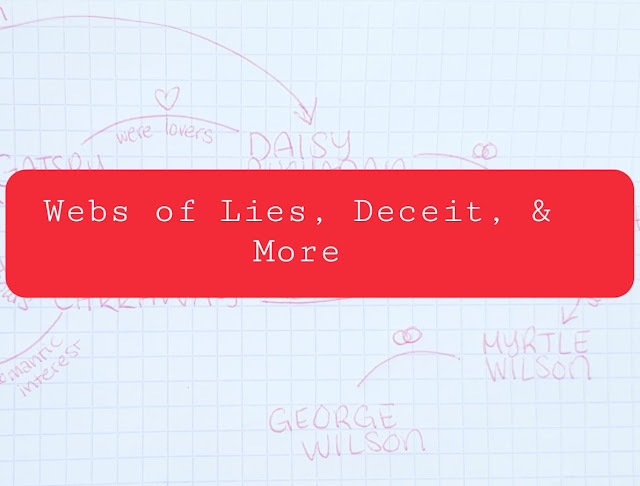Webs of Lies, Deceit, & More
For a long time, I read outstanding fantasy stories where the main characters were excellent strategists, operating moves ahead of all of their opponents. Even when things looked grim for them and there couldn’t possibly be a way out of that mess they’d found themselves in — well, it was all part of their grand schemes! I read those stories and thought to myself, “Dang. I’ll never be smart enough to write something brilliantly complex like that.”
Sound familiar to some of you writers out there?
Luckily for me, I also happen to be a mind-mapping enthusiast. I like making webs and mind maps. It’s how I study most effectively, and how I visualize links between different concepts. Curiously enough, though, for the longest time, I’d never actually been able to transfer that skill to my writing. The day that I finally did made me see a glimmer of hope that maybe — just maybe — I could write something as strategically complex as those amazing fantasy stories I’d binge-read.
So, for what it’s worth, and in the hopes that it might help like-minded authors struggling with their own plot complexities, here’s how mind-maps and webs helped me figure it all out.
When I write, I focus a great deal on my characters. In fact, I like to think of my stories as mainly character-focused, quite possibly at the expense of other important story elements. (I’m working on that.) I realized that all those times I had tried to create maps and webs of complex plot-lines, I’d been focusing on the wrong thing: the actual plot points.
I should have been focusing on the characters, because, like I said before, my stories often revolve around them.
So, instead of creating a map of plot points, I started making a web of characters and their relationships to one another. A character web sounds simple enough, I suppose, but when you’ve got a complex cast of dozens of characters, it can get a bit messy. But if there’s ever a time to get your hands dirty, it’s when you’re neck-deep in outlining, right? (Speaking of outlining — I dislike it. This is one of the few times when outlining seemed completely necessary for me, though, and I guess making webs is a pretty cool way of outlining.)
There are two kinds of character webs that I’ve found most helpful in preparing a complex story plot filled to the brim with deceit, secrecy, conspiracy, and all that other good stuff.
The first is an overall character web. Include every character’s relevant relationships with other characters. Do you have a character that plays an impactful role in the story, no matter how minuscule? Add ’em to your web. I also find that when I’m first starting a story, an overall character web helps me create characters that I’ll need and fill in gaps that don’t make sense.
The relationships you jot down will depend on what kind of information is important to highlight. For example, in one of my mind maps, I have it down that Character A was in love with a man who was wrongly executed and is now currently betrothed to Character B, who she will kill because of the damning role he played in getting her beloved murdered. (Really, it says: “betrothed; will kill him.”)
The second kind are smaller character webs revolving around specific characters. Pick the most important characters in your story, and place them at the center of their own maps. You don’t need to expand the maps all the way out — a couple degrees at most is what’s required. The really cool thing about this, apart from getting a more simplified look at how a character fits into the overall plot, is getting to see their relationships from the character’s perspective.
Another example from my own WIP: So, in Character A’s web, it says that Character B reports back to them. In Character B’s web, it says that they “report” back to Character A — revealing the fact that Character B is, in fact, a double-agent feeding Character A false information. But since Character A doesn’t know this, nothing is amiss in their character web, which represents their perspective. Does that make sense?
Here’s a quick and very simple example of a small character web I put down just now, featuring Fitzgerald’s Nick Carraway as the center:

(I would even argue that in Nick’s character web above, there’s no need to include George Wilson, since Nick doesn’t actually spend time with him or know him at all.)
Mind maps are an easy and quick way to visualize the complexity of your plot, and to add more complexity. They’re great for any kind of complex, character-driven story, including mysteries, thrillers, and dramas.
Do you use character maps — or mind maps in general — to plan out your story? If so, how effective have they been for you?


Comments
Post a Comment
Share your thoughts in the comments section!